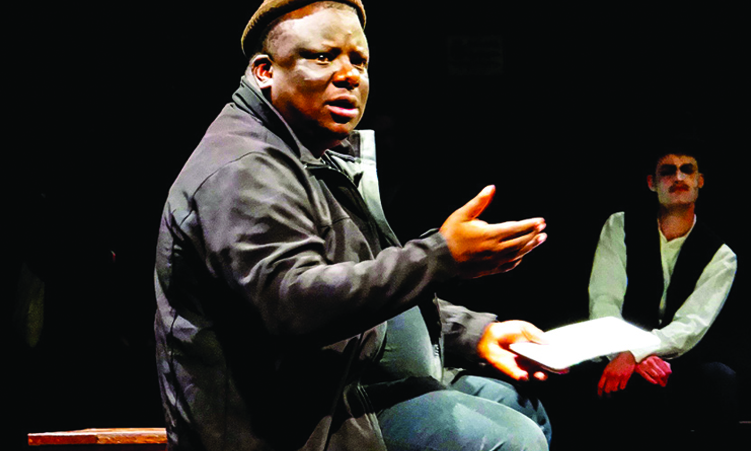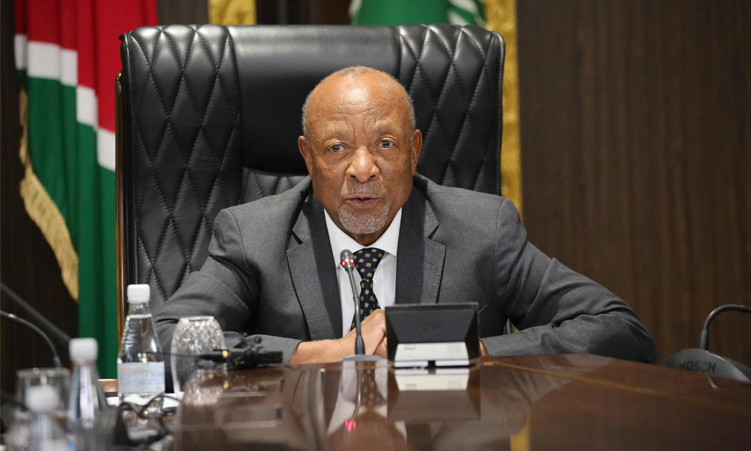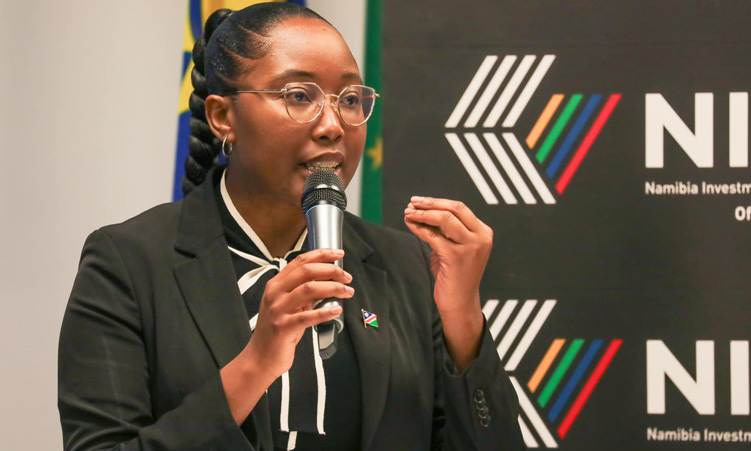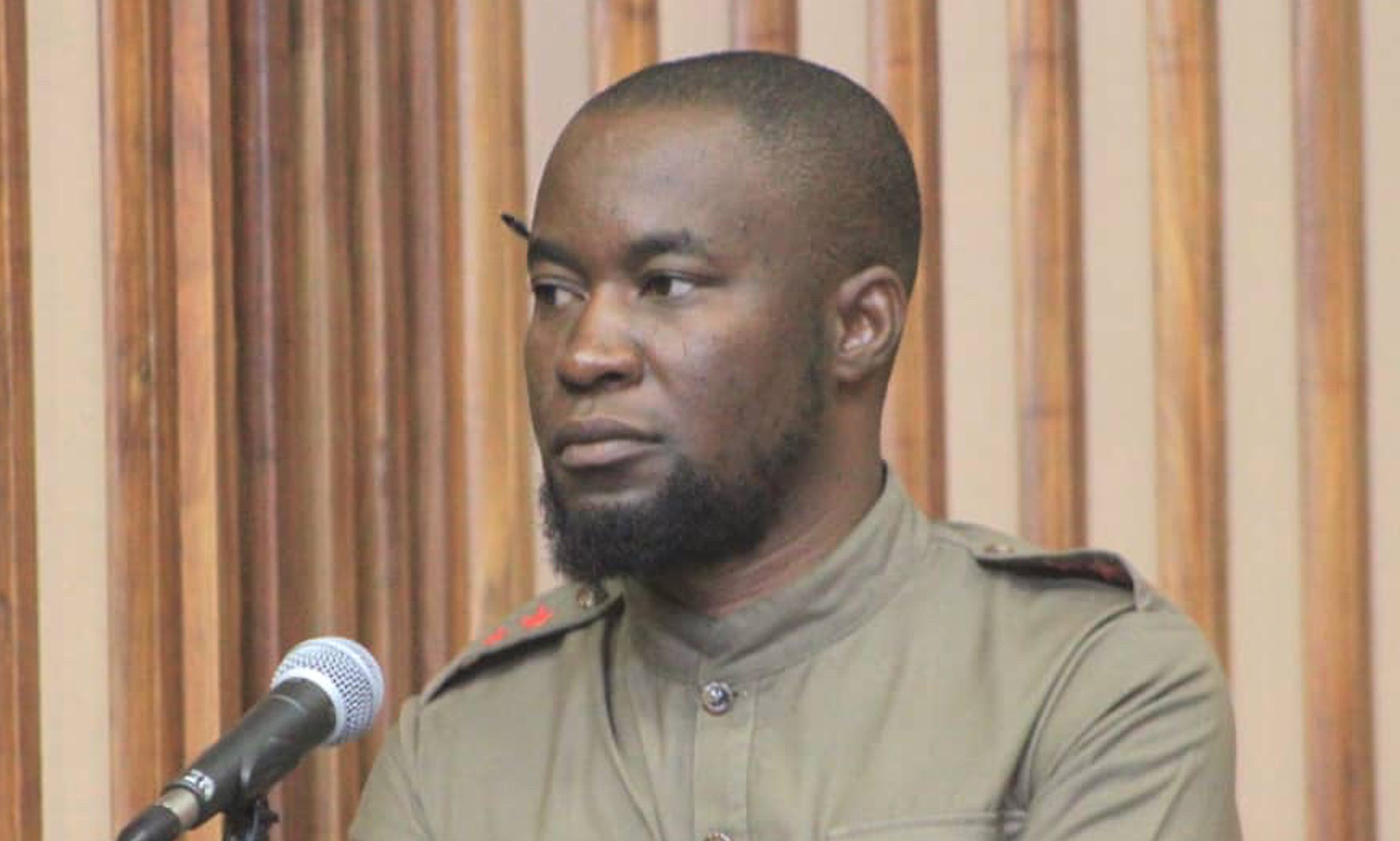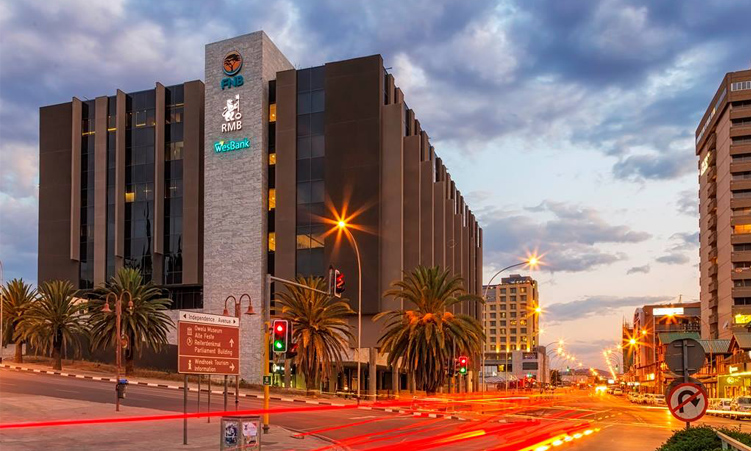The Herero and Nama Genocide of 1904 to 1908 has some grim imagery but perhaps none as disturbing as the scraping of skulls.
On a Saturday afternoon in the dark of the National Theatre of Namibia, ‘Hereroland’, a multidisciplinary theatre production, mimics grisly history as a German solider delivers a dead head to an OvaHerero woman tasked with scraping it clean. Many such OvaHerero and Nama skulls were eventually sent to Germany for study or display.
It is one thing to read about these atrocities in the media and another to watch actress Glenn-nora Tjipura horrified, keening and eventually abandoning all feeling as she readies the skull in a disassociated, swaying trance.
A sob escapes from the audience, which will spend a good part of three hours moving from a series of QR-coded digital stations, expounding on Namibia’s German colonial era, its benefit to Germany as well as the effect of the period in present-day Namibia.
As the audience moves from station to station and a clock ticks below an eerie score, virtual reality glasses act as a portal to a colonial museum at Grootfontein, a Himba settlement, the colonial hub of Hamburg, the plains of the Battle of Waterberg and to a contemporary conversation about the land question between a Herero activist, a historian and a local German farmer.
The sound of a cow horn calls the audience out of these digital journeys and towards a circular live theatre at the centre of the backstage installation.
Here, we see the scraping of the skulls. We watch ghost-faced Schutztruppen singing of their conquests and bestowing double-edged favour on a colonial era chief. Actor Ben Kandukira (Big Ben) leads the crowd in harrowing song and recites “From Swakopmund to Lüderitz shore, through Namib Desert they march and explore, German settlers focused on colonisation, targeting the Herero and Nama population”, as the audience relates what they witness in the digital realm to the affecting embodiments.
Originally directed by the late David Ndjavera and now helmed by Lizette Kavari alongside German director Gernot Grünewald, ‘Hereroland’ weaves the documentary of the digital stations with the dance, drama, monologue and music of live theatre to illuminating effect.
A non-linear, immersive and self-motivated experience that allows the audience to engage with the technological stations at their leisure, ‘Hereroland’s’ staging is certainly an ambitious examination but the process does run a tad long and the virtual reality can be both dizzying and blurry as the novelty of the 360 degree view wears off.
While the production begs for a tad more structure, a more substantial narrative arch as well as more voices from the Nama people and the German descendants currently living in Namibia and enjoying the fruits of violent colonialism with little to no consequence, ‘Hereroland’ is a noble undertaking produced by a Namibian and German team that succeeds in its collaboration, in educating and in its fostering of dialogue and reflection.
Rich with contemporary and historical texts such as battle reports, the history of Adolph Woermann in the context of the Woermann houses in Hamburg and Swakopmund, an account of a Himba woman abused by a German man and reflections on ancestry and the personal repercussions of the German colonial era by the Namibian performers, ‘Hereroland’ is a wealth of learning and a space of reckoning with its eye on the future.
Dedicated to Ndjavera as well as the late costume designer Cynthia Schimming and starring Otja Kambaekua, Kandukira, Lizette Kavari, Tjipura, West Uarije, Gift Uzera, Jonas Anders and Jörg Pohl, some of whom play multiple roles, the production, which first opened at Hamburg’s Thalia Theatre in 2020, presents a multitalented and compelling cast who breathe life into the seemingly far-removed realities of the genocide.
In monologues by Kavari, who underscores the significance of Herero names, the importance of restoring traditions and culture torn asunder during the colonial era and the need to look to the future, even in the wake of the violence of rape, dispossession of land and genocide, ‘Hereroland’ closes by opening to the floor, moderated by Kandukira’s protocol-observing Paramount Chief.
One audience member makes a case for elevating Herero and Nama Genocide studies to university level and another wonders as to the politics of the name, whether it is the Herero, Nama or Germans who should own it. There is also talk of reparations. One billion Euros. Is it enough to compensate for the ripple effect of division, landlessness and loss of identity and who will these reparations actually reach?
These questions linger as, almost three hours later, the audience steps out into the light. Those questions and the image of a skull-clutching Tjipura keening, swaying, scraping.
– martha@namibian.com.na; Martha Mukaiwa on Twitter and Instagram; marthamukaiwa.com
Stay informed with The Namibian – your source for credible journalism. Get in-depth reporting and opinions for
only N$85 a month. Invest in journalism, invest in democracy –
Subscribe Now!



